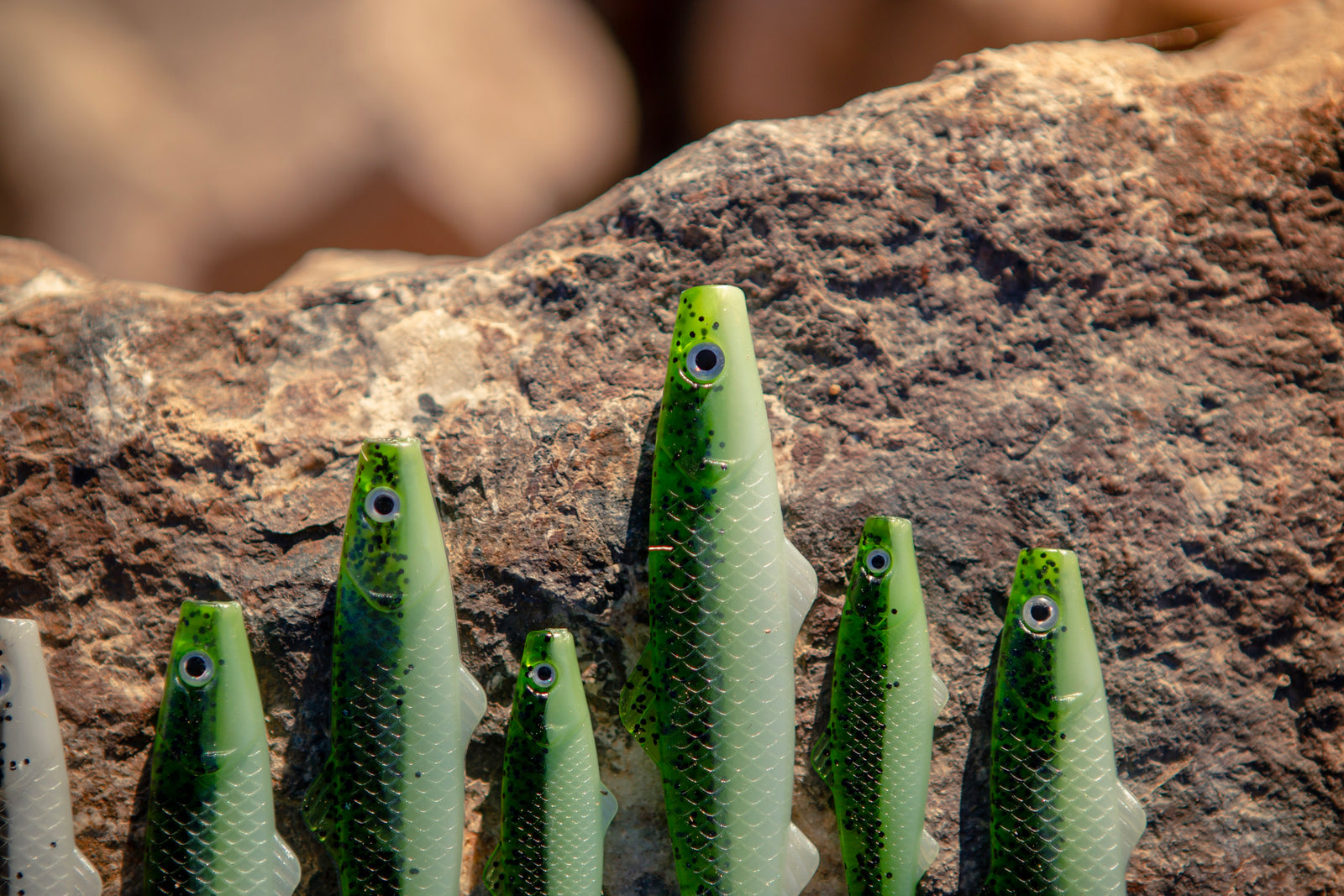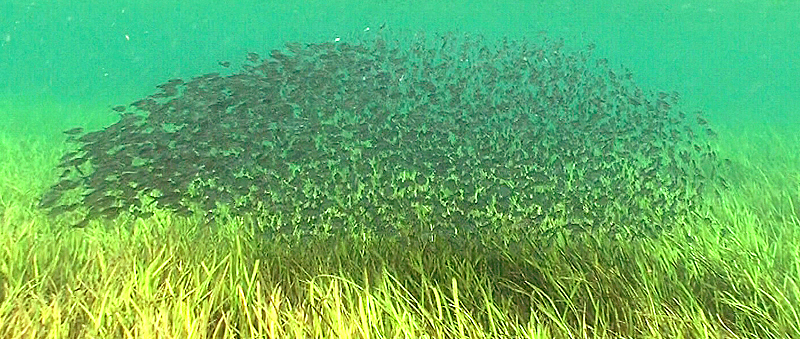Soft Plastic Lure Color Guide Pt. 1

Every year more and more soft plastic lure colors are added to the catalogs of all your favorite fishing lure brands and it can start to become overwhelming to decide which colors to select when there are sometimes dozens to choose from. Soft plastic lures are some of the best bass lures on the market and their success has driven companies to produce tons of different colors and variants. In this article we will dive into how to pick the right colors and make buying soft plastic lures easier. This will be part one of three in our soft plastic lure color guide where we narrow it down for you so you can be confident in knowing you have what you need to go out there and catch some fish.
The colors mentioned throughout this three part guide will be ones that we will be able to fish with all the time. No matter what time of year and where you are, these few colors have been proven over and over again to produce fish and based on a couple elements you’ll be able to decide for yourself which one to tie on for that day. First, let’s talk about these elements and then we’ll get into the colors being highlighted in this part one of the guide.
First things first, water clarity. There’s an easy guideline to picking lure colors based on water clarity and that is; the cleaner or clearer the water is, the more natural or subtle the lure color should be. The darker, dirtier, or muddier the water is, the more contrast or color the lure should have. If the water is clear it gives the fish a chance to see your lure better, so the lure color needs to look more realistic. If the water is stained or dirty it’s harder for the fish to see your lure so bright colors and colors with more contrast allow them to see your lure easier. Second, light penetration. What time of day are you fishing? Is it the crack of dawn, evening, night, or in the middle of the day? Is it a sunny day or is it overcast? These are questions you’ll have to ask yourself every time you go fishing so you can choose the right color. The rule of thumb here is a lot like our decision making when it comes to water clarity. The darker it is outside, the more color and contrast you want. Bright and vibrant for more color, or dark and bold for more contrast. Select a color from either end of the spectrum. The brighter it is outside, the more natural, subtle and translucent you want your colors to be. Select a color somewhere in the middle of the spectrum. Last but certainly not least, we have “matching the hatch”. This is arguably the most important element. This means mimicking the native forage with your lure and color. It is crucial to your fishing success to know what type of prey is in the body of water you’re fishing. What is the primary diet of the target species? Is it shad, minnows, alewife or herring? Match the hatch. Is it crawfish, bluegill, sunfish, or yellow perch? Match the hatch. If you don’t know what the forage is for the area you’re fishing you can just look it up online before you go. You can also look down into the water while you’re at the boat ramp or while you’re fishing from the bank to see what’s swimming around. Adjust your soft plastic lure color based on what you see.
Now that we know our elements that determine our color selection, let’s talk about colors from here on out. We’ll leave you with two before we wrap up part one of this guide. These two are probably the best selling soft plastic lure colors on the market, and for good reason. They’re very similar to each other and they are; green pumpkin and watermelon seed. These two colors are a must to have in your tackle box because they resemble so many different types of bait, especially species of panfish. Green pumpkin and watermelon seed are good middle ground or go-to colors for all fishermen alike. While green pumpkin is a more bold and darker shade of green, watermelon seed is a lighter, more translucent shade of green. Both of these colors land somewhere in the middle of the color spectrum while they are natural colors, but sometimes green pumpkin can actually do well in slightly stained water or low light conditions because of it being a darker shade of green, creating a bit more contrast. These colors are subtle and blend into the environment, which is what you want in clearer water. These two colors are perfect all around options and will never stay out of the water for too long.
Many would say if they could only pick one color to fish with for the rest of their lives it would without a doubt be green pumpkin or some variant like watermelon seed. The Banjo Minnow offers these two colors in Foliage Green and Pumpkin Green and our customers love them, telling us all about their success on the water, through comments on social media and good old dock talk. These best sellers have proven themselves over the years and continue to be the “People’s Champ” when it comes to soft plastic lure colors. Countless tournaments have been won off of these two colors and many personal bests have been reeled in. Whether you’re a pro or a pond hopper, all can appreciate the power of these good ole classic colors. You can use these two colors almost any time and anywhere. They’re a staple in the fishing world and will always be relevant, as long as the art of fishing stays alive.
That’s it for part one of our soft plastic lure color guide. We talked about the elements that help us navigate our color options and we talked about two of the best colors ever. In part two we’ll discuss the colors that mimic shad, minnows, alewife and herring, the colors that excel in clear water conditions and why they’re an absolute must to keep in your arsenal.




